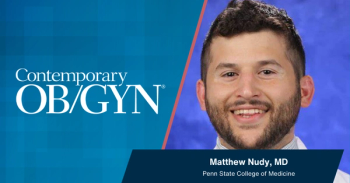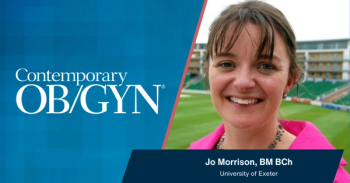
New Devices for Endometrial Ablation
OBGYN.net Conference CoverageFrom ISGE - Montreal, Canada - April, 1999
Dr. Bradley: "Good morning, my name is Dr. Glenn Bradley, and we are here in Montreal at the annual meeting of the International Society of Gynecological Endoscopy. Seated on my left is, Dr. Milton Goldrath, one of the founding fathers in terms of operative hysteroscopy. This morning we're going to talk with him about the current plethora of devices for successfully controlling menorrhagia by means of operative hysteroscopy. Milt, how many different procedures are there available or pieces of equipment now?"
Dr. Goldrath: "The availability is small, in other words, the ones in the United States for instance, that are approved, as of the present time are the thermal balloon, one called Thermachoice, roller balls, resectoscopes, and lasers. Those are currently approved, but there's a plethora of devices coming down the pike to perform endometrial ablation that do not require a high skill level in the operating surgeon."
Dr. Bradley: "Milt, I've visited you back in the mid-80's, watched Dr. Goldrath do ablations with the YAG laser and while he was very successful, it was a very skillful and difficult procedure in my hands, and of course, over the years we're trying to find easier ways to do it. Recently I had the opportunity to watch a tape that Dr. Goldrath made, that in my view is the most simple and safest procedure for endometrial ablation. Can you describe that to us?"
Dr. Goldrath: "Yes, the idea is that we can burn or destroy the lining of the uterus by the simplest means available, and it seemed to me that the easiest way to do it is to use a hot water solution through a hysteroscope so we could actually see what we're doing. Now one of my big fears of balloon methods and methods that don't involve vision is that the heat source is going to be in the wrong place. None of our senses are as good as our visual sense. So I decided that I wanted to develop a method using a hysteroscope - actually looking into the uterus as the procedure was being done. This involves the circulation of a hot saline, just normal physiologic saline solution, into the uterine cavity. We're very conscious of the fact that we have to prevent absorption of this, or at least monitor absorption. Interestingly, in our trials we have not had any absorption but we use a recirculating method so that the same saline is used over and over again, not to save the saline - that's very inexpensive - but so that we can accurately measure any absorption. The machine is calibrated in such a way, that if there is more than 10 cc's absorbed or lost from the system, it will automatically shut down and there will be no further fluid delivered to the patient."
Dr. Bradley: "Now Milt, most of the mechanisms to date that have required operative hysteroscopy usually necessitate conduction or general anesthesia in an out-patient setting. How is this new system - what are the advantages over the old systems in that respect?"
Dr. Goldrath: "Basically, the new systems have an advantage over the others in that, you're doing the same thing but you're doing it over a short period of time, and the patients will well tolerate that under a local anesthetic."
Dr. Bradley: "So your telling me then that this is really something that's very applicable to doing it in the office?"
Dr. Goldrath: "I think so. I think this should be a tremendous applicability in the office, and indeed, in our clinical trials now ongoing in the United States; it is being done in these centers in their offices."
Dr. Bradley: "Now tell me what has been the preliminary data in terms of successfully treating menorrhagia? By that term, I'll just use the phrase that this patient after the treatment is satisfied with the outcome in terms of either no periods or a flow that she can deal with. What is the success rate compared to the other methods?"
Dr. Goldrath: "This method - I prefer to discuss amenorrhea rates because that's the most objective of all."
Dr. Bradley: "That's what women want."
Dr. Goldrath: "Yes, and that's my experience, some physicians have said their women want to menstruate and I said, "I guess I can't fight that, but most of my patients say I don't want to menstruate anymore - I just want to quit."
Dr. Bradley: "Absolutely. That's the end point."
Dr. Goldrath: "So we look at amenorrhea rates, this one compares to the other new global methods, and I think we have to compare them with global methods like the balloons and so forth because they don't involve skill. You've got to remember if you take this out and put it over the whole community, if you require skill - there's going to be a tremendous variation. With this, it does not require any skills, so there's no variation in the quality of the procedure or the quality of the performance of the procedure. So this compares very favorably like, maybe, an amenorrhea rate of 30-40% greater than the other methods."
Dr. Bradley: "There's one other factor about the skill and we can look back historically in the United States despite the fact that there were methods to provide satisfactory control in amenorrhea that required a high degree of skill. It was because of that, that until we have achieved these new methods, we never had more than maybe 20,000-25,000 cases done a year and then we're talking about ten million women who've got this problem. So the gynecological community, in my view, never adopted the former methods because of the skill level required, so I think this is a great breakthrough."
Dr. Goldrath: "Thank you, we're very pleased with it."
Dr. Bradley: "Can you tell us when you think this may be available here in the United States?"
Dr. Goldrath: "It depends on FDA approval. Our clinical trials recruiting will be through within the next six weeks; that would be early in June, and it takes a year to get the follow-up time on the current FDA protocol. It's a randomized control study, controlling against rollerball ablation and the results so far, look very, very good. But it will not be marketed until FDA approval comes, which I would assume in about a year."
Dr. Bradley: "Speaking of marketing, what is the trade name of the device?"
Dr. Goldrath: "It's HTA - HydroThermAblation and the engineering and the marketing will be done by BEI Medical Systems."
Dr. Bradley: "Milt, thank you very much and good luck."
Dr. Goldrath: "Thank you, always great to see you."
Newsletter
Get the latest clinical updates, case studies, and expert commentary in obstetric and gynecologic care. Sign up now to stay informed.











